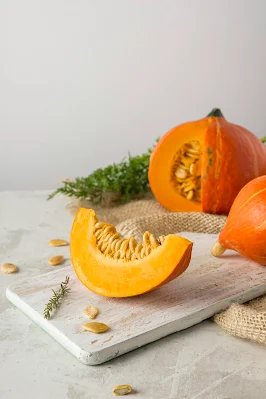History of Halloween and Pumpkins
Origins of Halloween Pumpkin Decorating :
Pumpkin decorating for Halloween has a long history and ancient rituals. The custom originated in Ireland, where people carved scary faces into turnips or potatoes to protect themselves from evil spirits that they believed would come out on Halloween night.
The custom spread to America :
As the Irish migrated to the United States, the custom spread with them, but since pumpkins were abundant in America, turnips and potatoes were replaced by pumpkins. Pumpkins became a symbol of Halloween, and are carved into the shape of lanterns called "Jack-o'-lanterns".
Symbolism and Meaning :
Scaring off evil spirits:
The main purpose of pumpkin carving was to scare away evil spirits and ghosts that were believed to come out on Halloween night.
Celebrating the Harvest :
Halloween is also associated with the harvest season, and pumpkins represented the abundance of crops.
Celebrating the Dark Season:
As winter approached and the days grew shorter, glow-in-the-dark pumpkins served as a source of light in the darkness.
Why pumpkins in particular?
Availability:
Pumpkins were plentiful in America, and they were easy to carve and shape.
Round shape:
Their round shape resembles the full moon, an important symbol in many cultures.
Orange color:
Orange is associated with the fall leaves, further linking pumpkins to the harvest season.
In short, pumpkins became a symbol of Halloween because of their long history of scaring away evil spirits, their association with the harvest season, and their ease of access and shaping.
Pagan customs:
Before Christianity, many cultures celebrated the harvest season and the farewell to summer with special rituals. Some of these rituals included wearing scary masks to appease the gods or ward off evil spirits.
Ancient fall festivals: In many ancient civilizations, there were festivals associated with the change of seasons, especially the transition from summer to fall. These festivals were often accompanied by symbolic rituals and activities.
Transition to America and the evolution of the custom:
Immigrant influence:
The Irish were not the only ones who brought this custom to America. Many other European immigrants celebrated similar holidays, which contributed to the spread of Halloween traditions.
Adaptation to American culture:
Over time, the custom of carving pumpkins evolved and was influenced by American culture. New and more complex forms of pumpkin lanterns appeared, and they became an integral part of family celebrations.
Symbolism and meaning in the modern context:
Family and friends fun:
Today, carving pumpkins has become a fun activity for family and friends, and an opportunity to express creativity.
Symbol of Autumn:
Pumpkins generally represent the season of autumn and its bright colors, a time to reflect and celebrate the beauty of nature. Symbol of Change: A carved pumpkin can be seen as a symbol of change, where something natural is transformed into a work of art.


